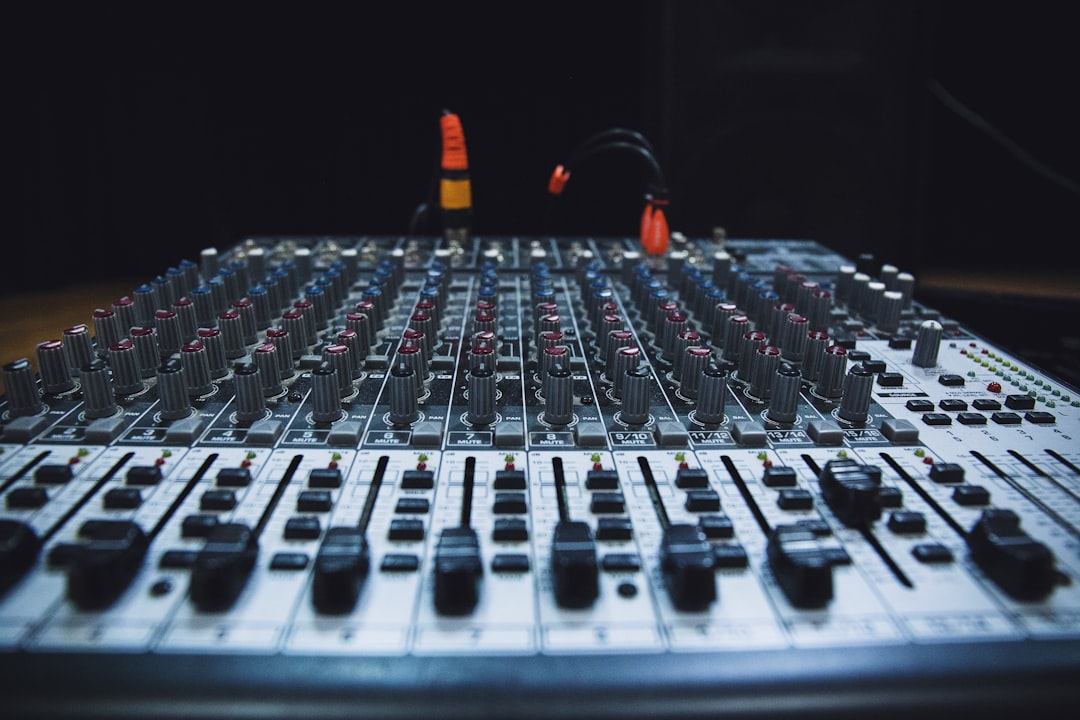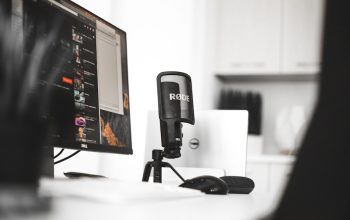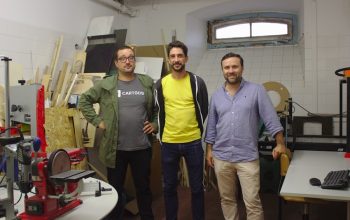The podcasting landscape has evolved dramatically over the past two decades, transforming from a niche hobby into a mainstream medium that reaches millions of listeners worldwide. As of 2023, there are over two million active podcasts, covering an extensive range of topics from true crime to personal finance, and everything in between. This growth can be attributed to several factors, including the rise of mobile technology, the increasing popularity of on-demand content, and the accessibility of podcasting platforms.
The democratization of content creation has allowed anyone with a microphone and an idea to share their voice, leading to a diverse array of shows that cater to various interests and demographics. Moreover, the podcasting industry has seen significant investment from major media companies and tech giants, further solidifying its place in the entertainment ecosystem. Platforms like Spotify, Apple Podcasts, and Google Podcasts have not only made it easier for listeners to discover new shows but have also provided creators with tools to monetize their content.
This influx of resources has led to a surge in high-quality productions, with professional sound design, expert guests, and compelling storytelling becoming the norm rather than the exception. As a result, understanding the podcasting landscape is crucial for aspiring podcasters who wish to carve out their niche in this competitive environment.
Key Takeaways
- Podcasting is a growing medium with a diverse landscape of content and audiences.
- Selecting the right equipment and software is crucial for producing high-quality podcasts.
- Planning and structuring your podcast can help maintain consistency and keep listeners engaged.
- Recording and editing skills are essential for producing professional and polished podcasts.
- Creating engaging content is key to attracting and retaining listeners.
Choosing the Right Equipment and Software
Selecting the appropriate equipment and software is a foundational step in launching a successful podcast. The quality of audio can significantly impact listener retention; therefore, investing in a good microphone is essential. USB microphones like the Blue Yeti or dynamic microphones such as the Shure SM7B are popular choices among podcasters for their clarity and ease of use.
Additionally, headphones are crucial for monitoring audio during recording and editing sessions. Closed-back headphones help isolate sound, allowing podcasters to catch any unwanted noise or audio issues in real-time. Beyond microphones and headphones, podcasters must also consider recording software.
Digital Audio Workstations (DAWs) like Audacity and GarageBand are user-friendly options for beginners, offering essential features for recording and editing audio. For those seeking more advanced capabilities, software like Adobe Audition or Reaper provides a broader range of tools for sound manipulation and post-production. Furthermore, cloud-based solutions such as Riverside.
By carefully selecting the right equipment and software, podcasters can ensure that their content is presented in the best possible light.
Planning and Structuring Your Podcast
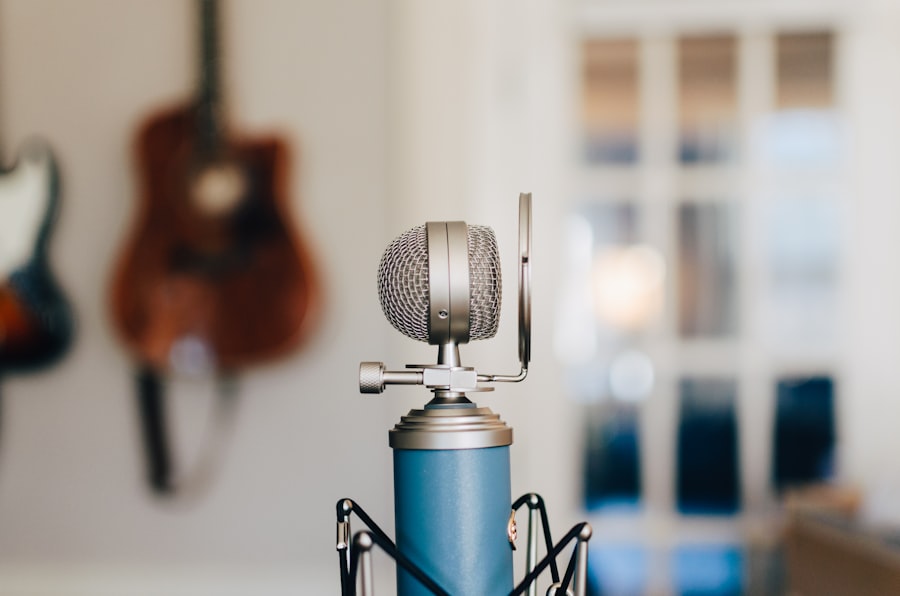
Effective planning and structuring are vital components of a successful podcast. Before recording the first episode, creators should define their podcast’s niche and target audience. Understanding who the podcast is for will guide content creation and help establish a unique voice that resonates with listeners.
For instance, a podcast aimed at young entrepreneurs may adopt a more casual tone, while one focused on academic discussions might require a more formal approach. This clarity will not only inform the style of delivery but also influence marketing strategies down the line. Once the target audience is identified, podcasters should outline their episode format.
Common structures include interviews, roundtable discussions, narrative storytelling, or solo commentary. Each format has its strengths; for example, interviews can provide diverse perspectives and expert insights, while narrative storytelling can engage listeners through compelling arcs and character development. Additionally, establishing a consistent episode length—whether it be 20 minutes or an hour—can help set listener expectations and build a loyal following.
Recording and Editing Your Podcast
| Metrics | Value |
|---|---|
| Number of podcast episodes recorded | 20 |
| Average recording time per episode | 45 minutes |
| Number of editing hours per episode | 2 hours |
| Number of podcast guests interviewed | 15 |
Recording and editing are critical stages in the podcasting process that can significantly influence the final product’s quality. When recording, it is essential to create an environment that minimizes background noise and distractions. This might involve choosing a quiet room, using soundproofing materials like foam panels, or even recording during off-peak hours when external noise is at a minimum.
Additionally, employing techniques such as proper microphone placement can enhance audio quality; for instance, positioning the microphone about six inches from the speaker’s mouth can capture clear sound while reducing plosive sounds. Editing is where the magic truly happens; it allows podcasters to refine their recordings by removing mistakes, awkward pauses, or background noise. Software like Audacity or Adobe Audition offers tools for cutting audio tracks, adjusting levels, and adding effects such as compression or equalization to enhance sound quality.
Furthermore, incorporating music or sound effects can elevate the listening experience when done tastefully. However, it is crucial to ensure that any music used is royalty-free or properly licensed to avoid copyright issues. The editing process not only polishes the final product but also helps maintain listener engagement by ensuring a smooth flow throughout each episode.
Creating Engaging Content
Creating engaging content is at the heart of successful podcasting. To captivate an audience, podcasters must focus on storytelling techniques that resonate with listeners on an emotional level. This could involve sharing personal anecdotes or case studies that illustrate key points or using humor to lighten complex topics.
For example, a health-focused podcast might share relatable stories about overcoming challenges in maintaining a healthy lifestyle, making the content more accessible and engaging for listeners. Additionally, incorporating listener feedback can enhance content relevance and foster a sense of community among audiences. Encouraging listeners to submit questions or topic suggestions not only makes them feel valued but also provides insight into what resonates with them.
Furthermore, inviting guests who bring unique perspectives or expertise can add depth to discussions and keep content fresh. By prioritizing engaging content creation strategies, podcasters can build a loyal listener base eager for each new episode.
Promoting and Marketing Your Podcast
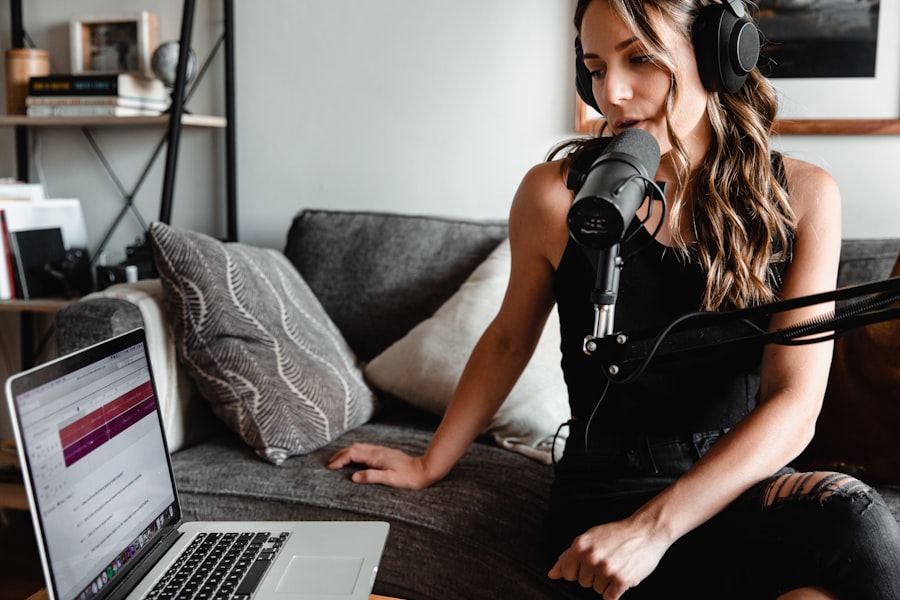
Promotion and marketing are essential for gaining visibility in a crowded podcasting space. One effective strategy is leveraging social media platforms to reach potential listeners where they already spend their time. Creating dedicated accounts on platforms like Instagram, Twitter, or TikTok allows podcasters to share snippets of episodes, behind-the-scenes content, or engage with followers through polls and Q&A sessions.
Collaborating with other podcasters or influencers in similar niches can also expand reach by tapping into established audiences. In addition to social media marketing, optimizing podcast listings on platforms like Apple Podcasts or Spotify is crucial for discoverability. This includes crafting compelling episode titles and descriptions that incorporate relevant keywords while accurately reflecting the content.
Encouraging listeners to leave reviews can improve rankings within podcast directories, making it easier for new audiences to find the show. Furthermore, creating a website or blog dedicated to the podcast can serve as a hub for additional content such as show notes, transcripts, or related articles that enhance listener engagement.
Building a Community and Engaging with Your Audience
Building a community around a podcast fosters loyalty and encourages ongoing engagement from listeners. One effective way to cultivate this sense of community is by creating dedicated spaces for interaction, such as Facebook groups or Discord servers where fans can discuss episodes, share ideas, or connect with one another. These platforms provide opportunities for podcasters to engage directly with their audience by responding to comments or facilitating discussions around specific topics covered in episodes.
Additionally, hosting live events—whether virtual or in-person—can strengthen community ties by allowing listeners to interact with hosts and guests in real-time. These events could take the form of live recordings, Q&A sessions, or even meet-and-greets at industry conferences. By actively engaging with their audience through various channels and events, podcasters can create an inclusive environment that encourages listener participation and fosters long-term loyalty.
Monetizing Your Podcast
Monetization is often a key consideration for podcasters looking to turn their passion into a sustainable venture. There are several avenues through which podcasters can generate revenue; one of the most common methods is through sponsorships and advertising partnerships. By collaborating with brands that align with their content and audience values, podcasters can secure financial support while providing relevant products or services to their listeners.
Another popular monetization strategy involves offering premium content through subscription models or Patreon-style platforms where fans can access exclusive episodes or bonus material for a fee. This approach not only generates income but also deepens listener engagement by providing added value beyond standard episodes. Additionally, merchandise sales—such as branded apparel or accessories—can serve as both a revenue stream and a marketing tool that promotes brand loyalty among fans.
By exploring various monetization strategies tailored to their audience’s preferences, podcasters can create sustainable income streams while continuing to produce high-quality content.
If you’re looking to start your own education podcast, you may find the article “Hello World” on the Education Podcast Network blog to be a helpful resource. This article provides insights and tips on getting started with podcasting in the education sector. For more information on podcasting, you can also check out the Education Podcast Network website at https://educationpodcast.network/.
FAQs
What is a podcast?
A podcast is a digital audio or video file that is available for streaming or downloading on the internet. It is typically part of a series and can cover a wide range of topics, from news and entertainment to education and storytelling.
How do I start a podcast?
To start a podcast, you will need to come up with a concept or theme for your show, obtain the necessary equipment (such as a microphone and recording software), record and edit your episodes, and find a hosting platform to distribute your podcast to listeners.
What equipment do I need to start a podcast?
The basic equipment needed to start a podcast includes a microphone, headphones, a computer, and recording/editing software. Additional equipment such as a pop filter, microphone stand, and audio interface may also be beneficial for improving the quality of your recordings.
How do I record and edit a podcast?
To record a podcast, you will need to set up your recording equipment in a quiet space, speak into the microphone, and save the audio file. Editing a podcast involves removing any mistakes or unwanted sections, adding music or sound effects, and adjusting the audio levels for a polished final product.
How do I distribute my podcast?
Once your podcast episodes are recorded and edited, you can distribute them to listeners by using a podcast hosting platform such as Podbean, Libsyn, or Anchor. These platforms will generate an RSS feed for your podcast, which can then be submitted to directories like Apple Podcasts, Spotify, and Google Podcasts.
How do I promote my podcast?
Promoting your podcast involves creating engaging cover art and a compelling podcast description, sharing your episodes on social media, reaching out to potential guests or collaborators, and engaging with your audience through listener feedback and reviews. Additionally, networking with other podcasters and seeking opportunities for cross-promotion can help increase your podcast’s visibility.
